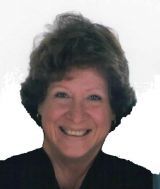Starting with a biblical quote attracts attention, and is suitable for a subject about what some people like to term ‘biblical proportions’. What does the term mean, exactly? Well, if you love the numbers game, the Bible is a book you might like. It’s hardly filled with empirical or scientific statistics, since they did not have the United Nations bean counting team in those days, to really crunch the numbers, but it can be entertaining. Like the ten plagues, the seven deadly sins, and did you know the number seven appears 42 times in the books of Daniel and Revelation?
If you really like numbers, a “creative” look at the world’s population is possible through a number of lenses. One is here, posted with a recommendation to read, and a warning: your GSOH is necessary, even when you peruse the colourful graphs.
How does this relate to reading and writing? When one looks at the world population, one wonders at how many of those people can read in English, how many can afford to buy paperbacks or a reading device. How many like your genre. How many are old enough to read it. How many can afford the price. How many read indie books. How many read fiction. And how many are likely to stumble across your novel. You might be left with a number that surprises you, especially if you relate it to the numbers of titles competing for that readership.

One might study population statistics and demographics, and then one might playfully match them with statistics about books and book sales. An amazing graph can be drawn of readers and their purchasing behaviour. An even more astounding curve is made by the numbers of books published in the last three years. There are also numerous books sales graphs, seen from different perspectives.
The intersections of those graphs, if one were to undertake the plotting exercise, would be an education indeed. Place your own titles as random dots on those curves, and the picture starts to take on a humorous twist. One can compare it to a number of other warped things in life. Like brainwaves. Or marketing curves. Or going round the bend.
One can call the market a desert, with your books as seeds, and chances of germination determined by where they happen to fall. What a wilderness – and yours is the voice that cries there.
An article published by Steven Piersanti enhances the argument. In it, he plays with various recent statistics about self-publishing, sales, the resurrection of readers, and ends with seven ways to deal with current trends. It makes interesting reading. Apparently, there have never been so many active readers in the world as now, so biblical proportions and phrases such as ‘bigger than Ben Hur’ are appropriate. There have never been so many authors, too. Some do not see this as a worry, but over-supply is a non-numerical term that has been bandied about in the last fortnight.
Ah, numbers. Numbers – do they put you to sleep … or keep you awake?
* * * * *
 Rosanne Dingli is fascinated by book statistics, biblical conundrums and the behaviour of readers. For more about Rosanne Dingli, visit her blog and her website.
Rosanne Dingli is fascinated by book statistics, biblical conundrums and the behaviour of readers. For more about Rosanne Dingli, visit her blog and her website.
You may manage your subscription options from your profile.



Both – depending on which numbers. lol I admit I certainly never thought about them this way, though.
I love numbers, but they can be depressing. I like to think that the probability of someone halfway across the world stumbling upon your book is higher than it was in the 1800s or even the 1980s. So all in all, the numbers are bigger now, and the game is different, but the potential is the same. (Please don't disabuse me of this notion!)
What's GSOH?
Interesting. Numbers cause my brain to shut down. 😉
GSOH, Tessa, is Good Sense Of Humour. It's what I propose one must have when doing anything related to books or writing, or when responding to dating ads, which I see you do not do.
No need for personal attacks, Rosanne!
Haha – well done – I see you get exactly what I mean. 8o))
lol – now I don't have to ask.